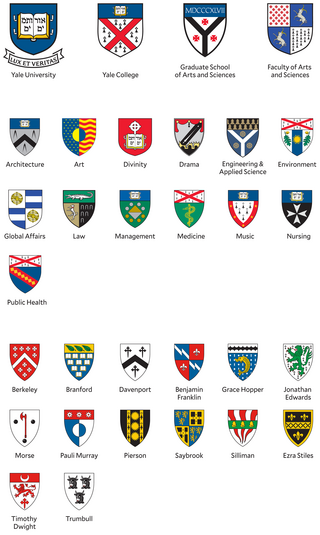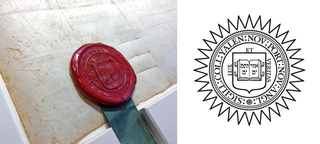European heraldry is a visual identification system, based on “coats of arms,” developed in the late Middle Ages to identify and distinguish the nobility. By the 1500s, the right to “bear arms” was extended to the wealthier classes, as well as to universities, businesses, guilds, and municipalities.
Heraldry can be thought of as an early form of branding. As for most contemporary branding and institutional identity systems, a high level of consistency was valued in the creation and use of heraldic arms, which were, and continue to be, designed within the constraints of the “Laws of Heraldry.” These laws limit the ways arms may be drawn and colored. With few exceptions, Yale’s coats of arms—usually comprising simple shields without additional elements—follow these formal heraldic laws.
Yale University, the College, the Graduate School of Arts and Sciences, and the Faculty of Arts and Sciences, along with all of the professional schools and residential colleges, currently make up an array of 31 coats of arms (shields), shown here.

